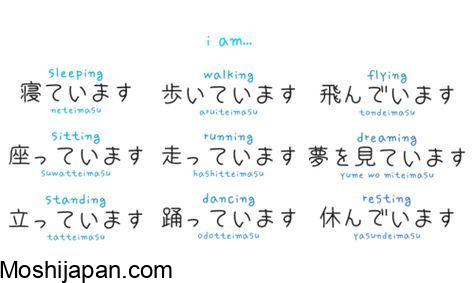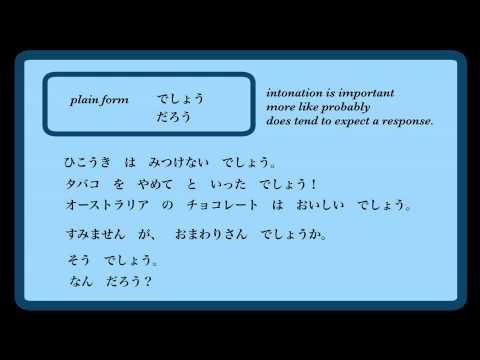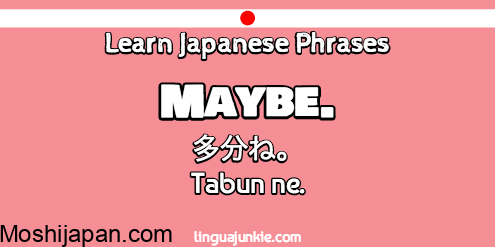How to Say “Maybe” in Japanese: Unlocking the Art of Uncertainty
If you’re fascinated by the Japanese language and culture, you’re in for a treat! Today, we’re delving into the intriguing world of expressing uncertainty in Japanese. You might have heard that Japanese is a nuanced language, and saying “maybe” is no exception. So, buckle up and get ready to unravel the secrets of expressing uncertainty in Japanese.
The Journey Begins: Understanding the Basics

Before we dive into the specifics of saying “maybe” in Japanese, let’s start with the basics. In Japanese, the word “maybe” can be expressed in various ways, each with its unique nuances. So, how do you navigate this linguistic labyrinth?
1. “Tabun” (多分)
Imagine you’re discussing plans with a friend, and you’re not entirely sure if you can make it. In this situation, you can use “tabun” to convey uncertainty. It’s a versatile word that indicates “probably” or “maybe” depending on the context. For example, “Tabun ikeru yo” means “I can probably go.”
2. “Kamoshirenai” (かもしれない)
Now, let’s say you’re even less certain. You can opt for “kamoshirenai,” which translates to “maybe” or “might” in English. This phrase adds a layer of doubt to your statement. For instance, “Ame ga futteiru kamoshirenai” means “It might rain.”
Navigating the Nuances

Japanese, like any language, thrives on context and nuance. To truly master saying “maybe,” you need to grasp the subtleties of these expressions.
3. “Doubt and Certainty”
In Japanese, there’s a fascinating interplay between doubt and certainty. “Tabun” leans more towards certainty, whereas “kamoshirenai” emphasizes doubt. Depending on your level of uncertainty, you can choose the word that best fits your situation.
4. Non-Verbal Cues
Japanese communication isn’t just about words; it’s also about non-verbal cues. Your tone, facial expressions, and body language play a significant role in conveying uncertainty. A polite smile can soften the impact of a doubtful statement.
Unlocking Cultural Insights

Understanding how to say “maybe” in Japanese isn’t just about language; it’s a journey into Japanese culture and etiquette.
5. Politeness Matters
In Japanese culture, politeness is paramount. When expressing uncertainty, it’s essential to do so with grace and respect. Using polite language and showing humility in your expressions is a sign of cultural sensitivity.
6. Harmony in Communication
Japanese society values harmony in communication. Being too direct with your uncertainty might be considered impolite. Learning the art of subtle ambiguity is a valuable skill in Japanese interactions.
Practical Tips for Effective Communication

Now that you’ve got a grasp of the basics and nuances, here are some practical tips to help you communicate uncertainty effectively in Japanese:
7. Listen and Learn
Immerse yourself in Japanese conversations. Listen to native speakers and observe how they express uncertainty. Learning from real-life examples is incredibly valuable.
8. Practice Makes Perfect
Don’t be afraid to practice using “tabun” and “kamoshirenai” in your conversations. The more you use these expressions, the more natural they’ll become.
9. Embrace Cultural Sensitivity
Remember the cultural context when using these expressions. Being culturally sensitive is just as important as using the correct words.
FAQ: Your Burning Questions Answered

Q1. Can I use “tabun” and “kamoshirenai” interchangeably?
A1. While both expressions convey uncertainty, “tabun” leans more towards certainty, and “kamoshirenai” emphasizes doubt. Choose the one that aligns better with your level of uncertainty.
Q2. Are there other ways to say “maybe” in Japanese?
A2. Yes, there are additional expressions like “kana,” “shikata ga nai,” and “oshietageru.” Each has its own unique nuance and usage.
Q3. Is it necessary to use these expressions in everyday conversations?
A3. Using “tabun” and “kamoshirenai” is not obligatory, but it enriches your Japanese communication skills and demonstrates cultural awareness.
key words
- learn japanese in 90 days 2024
- japanese in use everyday
- japanese for to day
- how to say i love you in japanese



0 Comments